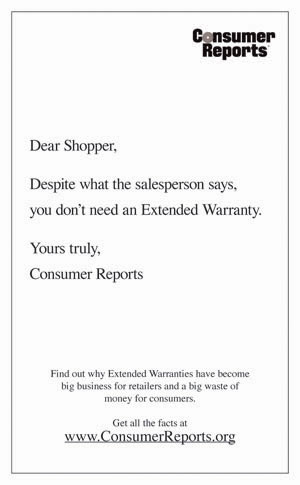In our 22nd year of providing the latest & greatest Warranty Information.
-
Solar Power Warranty Expenses: SunPower just filed for Chapter 11 bankruptcy in August, leaving behind ongoing 25-year product warranties, for which its suppliers are now on the hook. On the industry level, it seems that the claims rate exceeding the accrual rate is becoming a concerning new norm.
Oct 17, 2024
-
Worldwide Auto Warranty Report: In 2023, the global automotive manufacturers paid $51 billion in warranty claims, with an average claims rate of 1.98%, and set aside $65 billion in warranty accruals, with an average accrual rate of 2.52%. At the end of 2023, the worldwide automakers held a total of $140 billion in warranty reserves.
Oct 3, 2024
-
Warranty Innovation Awards: The first annual Warranty Innovation Awards were bestowed on five recipients at the Extended Warranty & Service Contract Innovations conference in Chicago this week. We caught up with the winners and learned their best practices for success in the warranty and service contract industry.
Sep 26, 2024
-
Electric Vehicle Warranty Expense Rates: While EV adoption rates have wavered in the United States, they're going steady in China and Europe. We're looking at the warranty expense rates of nine EV pure plays, including the two largest competitors, BYD and Tesla, along with a number of newer startups.
Sep 19, 2024
-
Top Korean & Indian Automaker Warranty Expenses: Hyundai and Kia had another tough year, marked by recalls of millions of their vehicles. On the back of a 2022 also filled with recalls, the warranty expenses of the two South Korean vehicle manufacturers are higher than ever. Tata, on the other hand, has become consistent in its warranty accounting, years after its acquisition of Jaguar Land Rover.
Sep 5, 2024
-
Super to provide home warranties to Long & Foster Real Estate clients.
Press Release, Oct 16, 2024
-
Warrantywise introduces new EV Plus warranty plan.
Motor Trader (UK), Oct 16, 2024
-
Azulle lengthens mini PC hardware warranty from 1 to 3 yrs.
Press Release, Oct 16, 2024
-
New book about The Dental Warranty Revolution written by Max Zanan.
Press Release, Oct 14, 2024
-
Allstate Protection Plans acquires smart device lifecycle company Kingfisher.
Press Release, Oct 14, 2024
-
Central Consumer Protection Authority probes Ola Electric warranty policies.
CNBC-TV18 (IN), Oct 11, 2024
-
Candor Technology's Loan Engineering System include FHA loan warranty.
Mortgage Orb, Oct 11, 2024
-
FTC sends $449,000 in refunds to customers scammed by American Vehicle Protection Corp.
Press Release, Oct 10, 2024
-
Lexus offers 10-yr./100,000-mile warranty package in the UK.
Press Release, Oct 10, 2024
-
Why EV manufacturers should use EV-specific warranty management software.
Tech Bullion, Oct 10, 2024
-
Browns offers paperless warranty for Exide car batteries in Sri Lanka.
Daily Mirror (LK), Oct 10, 2024
-
ICW and FMB Insurance offer A-rated building warranties to federation members.
PBC Today (UK), Oct 10, 2024
-
Commissioner explains that expired warranties don't mean voting machines won't work.
Bulgarian News Agency, Oct 9, 2024
-
ABL is marine warranty surveyor for two offshore wind projects in Normandy, France.
Press Release, Oct 9, 2024
-
Mazda Philippines lengthens HEV battery warranty from 3 to 5 yrs.
Philippine Star, Oct 8, 2024
World's Largest Warranty Problems:
On the one hand, U.S.-based manufacturers are required to disclose their warranty expenses to investors. On the other hand, they try their best to obscure the news and bury it in plain sight when something really expensive happens. But as the saying goes, a picture's worth a thousand words. And in the charts that follow, it's hard to hide a billion-dollar warranty problem.
Over the past few years, every once in a while, a set of warranty expense numbers comes in that makes us wonder if there's been a typographical error in a company's annual report. Suddenly, there's a billion-dollar warranty expense and there's no explanation at all anywhere in the document.
Other times, a major safety recall or some other big event makes the news, and inevitably it gets reduced into a major escalation in a company's warranty expenses. For these, we don't need any additional explanations, but we never do find out exactly how much it costs.
Consumer Reports' 2006 Extended Warranty Ad:
There was panic in the industry when one of the most trusted consumer advocates told its readers not to buy extended warranties. Ten years later, the magazine's advice is almost forgotten, and the industry is bigger than ever.
In a few weeks we'll be marking a very important anniversary in the service contract industry. Just as the holiday shopping season of 2006 was getting under way, a major consumer product ratings publisher told shoppers that extended warranties were a waste of money. On Tuesday morning, November 14, 2006, the USA Today newspaper carried on the back page of the "Money" section (page 10B), the following full-page ad placed by Consumer Reports magazine:

Reaction was swift. Some said both the frequency of breakdowns and the average cost of repair was higher than Consumer Reports was calculating, making service contracts a better value than was admitted. Others said it was simply a matter of price, in that nobody would deny the value of a service contract priced at 0% of the product's price (in other words, free).
VW's Emissions Warranty Scandal:
Some students cheat on tests. But companies rarely do, because the cost of getting caught is very high. And in the long run, someone usually snitches. So isn't it ironic that a bunch of students caught one of the world's largest manufacturers cheating on a test?
At Volkswagen AG, the world's largest passenger car manufacturer, and the world's largest warranty provider, with some of the industry's highest warranty expense rates, things just went from bad to worst. The company, which spent 7 billion euro (US$7.9 billion) last year on warranty claims, could end up paying an additional US$3.6 billion in claims and fines to fix a major problem with almost half a million diesel cars that have been found to be illegally polluting the air.
It all started last May, when the International Council on Clean Transportation, a small nonprofit organization focused on the reduction of vehicle emissions, and a research team at the Center for Alternative Fuels Engines and Emissions within West Virginia University, documented the discrepancy between test levels and real world nitrogen oxide (NOx) emissions levels from new passenger cars equipped with diesel engines.
Warranty Expenses When Conglomerates Break Up:
In early 2020, two diversified companies spun off product lines to become "pure plays" in specific industries. And now, seven quarters later, the warranty expense metrics of the five new companies, which were previously blended together, have diverged in very distinct ways.
After news broke last month about the plans of General Electric Company and Johnson & Johnson to break themselves into three and two companies, respectively, it made us recall the break-ups of last year, when United Technologies Corp. and Ingersoll-Rand plc reorganized themselves into three and two units.
As we wrote about in the May 28, 2020 newsletter, our main interest in the break-ups of these conglomerates was how their subsequent financial statements would allow us to get a much clearer view of their warranty expenses, since the aerospace claims and accruals would no longer be blended with those of the air conditioning or industrial/building products lines of business. And now, with nearly two years of separate data in hand, that clearer picture has emerged.
The A-Team of Extended Warranties:
Ten companies, whose names all begin with the letter A, control at least 57% of the $40 billion U.S.-based and consumer-facing service contract industry. Most are administrators and/or underwriters of the protection plans, but a few are electronics manufacturers and/or retailers.
Extended warranties are a huge business in the U.S. Last year, consumers spent an estimated $17 billion on vehicle service contracts, and roughly $23 billion on protection plans for their appliances, electronics, computers, and mobile phones.
A huge chunk of that money is going to the people that sell them: the dealers and retailers who collect very healthy sales commissions and move on. But the rest is going to a long list of service contract administrators and insurance underwriters who seem to retain the risk and do all the work.
